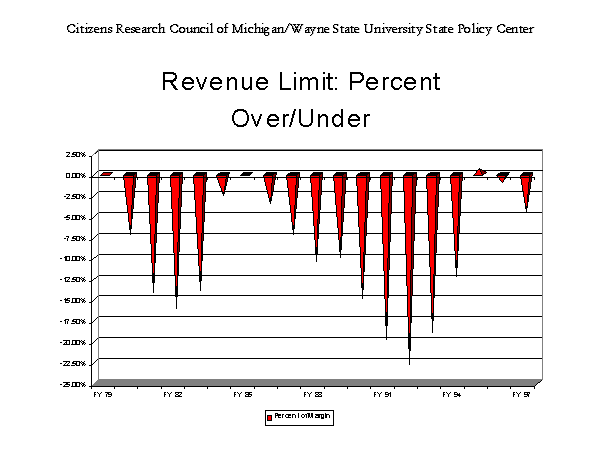
|       |
Slide 35 of 84

|       |
Slide 35 of 84
We have a chart showing the history of the revenue limit. Those daggers are the amounts below the limit and this chart is in percentage terms so that it adjusts for the size of the budget and revenue base. In 1979, the base year, the revenues were equal the limit. A large gap opened up, exceeding 15 percent as we moved into the early 1980s. Then we had the financial crises, the temporary income tax increase, strong economic growth and by 1985 the state was pressing against the limit. Then, as the income tax was reduced back to its original rate of 4.6 percent the gap opened up again. Then with the approval of Proposal A in 1994 , it got to the point where the state exceeded the revenue limit, even though there was a preemptive tax reduction that let some of financial the air out of the tires. Since then, the gap has started to open up again and the revenue structure of the state will cause revenues to recede from the limit over time. Economists would say the revenue structure is inelastic relative to personal income. What it means simply is that for each percentage point of growth of personal income, state revenues increase by less than a percentage point. So the gap is likely to open up in the future as a result of that phenomenon.